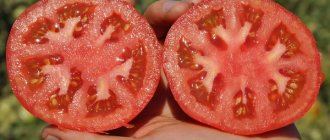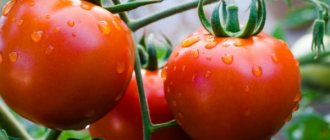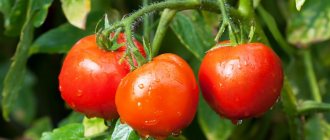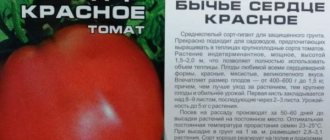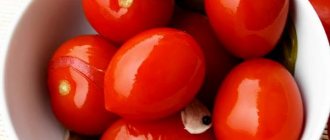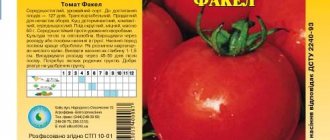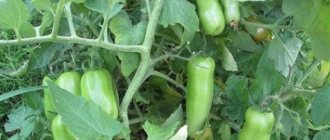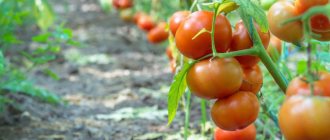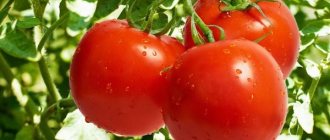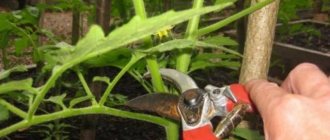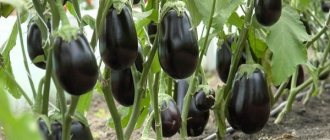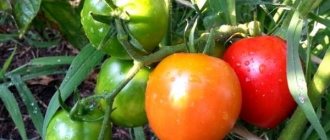The huge assortment in garden centers and online stores poses a difficult task for the gardener: how to choose tomato seeds, what to choose, variety or hybrid, what signs to focus on so as not to have to worry about failures.
The assortment is now very large; the latest edition of the State Register of the Russian Federation lists more than 2,700 varieties and hybrids of tomato, with 360 new products registered in 2021 alone. Of course, not all of them are available for sale, but there is enough choice in retail chains; unregistered names from individual seed companies are added to the official assortment, as well as seeds from amateur breeders who actively distribute amateur varieties.
Variety or hybrid: what to choose and how do they differ?
This is perhaps one of the main questions for a gardener. A variety is a plant that is similar in external (morphological) and genetic characteristics, created through selection and adapted to certain growing conditions. Varietal plants are similar to each other, their seed offspring retain all the characteristics when re-sowed.
Hybrids are the offspring of crossing two or more parent plants. The name of the hybrid always contains the F1 icon (from the Italian figli - children). When describing a hybrid, you can come across the name “heterotic,” which means that it is superior to the best parental form in some way, for example, in yield. Hybrids do not retain characteristics in their offspring; to obtain them, breeders annually carry out very labor-intensive crossings of parental forms. This is why hybrids are much more expensive than varieties.
There is no point in preparing seeds of hybrids, you will not be able to repeat the selective crossing, and plants obtained from your own seeds will not inherit valuable traits - disease resistance, a certain size, shape and taste of the fruit.
Creation of tomato hybrids
Some hobbyists are afraid to purchase hybrid seeds, believing that they are genetically modified plants and will be harmful to health. Questions are also raised by certain letter designations after the F1 icon, some even take them as a sign of GMOs.
Firstly, hybrid plants have nothing in common with genetically modified ones. GMO varieties are created through a very complex and expensive process for crops that are grown over very large areas on an industrial scale. Such varieties of soybeans, corn, rapeseed, alfalfa, sugar beets and some other crops are cultivated mainly on farms in developing countries. Regarding the harm of GMO varieties, I would like to note that the authoritative world scientific community has not yet revealed proven facts of the toxicity of such plants.
As for the icons, they indicate the resistance of a variety or hybrid to certain diseases, for example, a tomato resistant to tomato mosaic virus is designated ToMV, to tobacco mosaic virus - Tm, to verticillium wilt - Va.
Which is better, variety or hybrid?
The gardener must decide for himself what is important to him. The varieties are considered more unpretentious; plants react less to errors in agricultural technology; in any case, you can get at least a minimum yield. If you are going to prepare tomato seeds yourself in the future, then you need to focus on varieties. The first, most typical fruits of the best plants should be left for seeds.
Hybrids will give excellent results, a high yield of fruits that are uniform in all characteristics, but will require close attention and careful care from you, only in this case will you get the full benefit of the plant and see all the positive qualities laid down by the breeder. In addition, you will not be able to prepare seeds from them, and you do not need to do this.
How to choose a variety or hybrid, what to look for?
First of all, you need to consider the region in which you live. It is advisable for northerners to pay attention to varieties and hybrids specially created for the harsh conditions of the risky farming zone, which in our country includes most of the Non-Black Earth Region. For example, for the Northern region the following are recommended: Alena F1, Red Arrow F1, Ordynka, Titanic F1; for the North-West - Crystal, Rebelion F1; for Central - Almaz F1, Dubrava, Iskander F1, Samara F1; for Volgo-Vyatka - Gnome, Grand, Grotto. In all of these regions, as well as in the Central Black Earth, North Caucasus, and Middle Volga regions, the variety Bely Naliv 241 and the hybrid Ivanovets F1 have been released. The hybrids Andromeda F1, Kostroma F1, Ostozhenka F1, and the Lyana variety have been zoned in several regions. It should be taken into account that varieties and hybrids zoned in the northern regions are intended for protected soil.
Siberians have their own varieties; in the West Siberian, East Siberian regions and the Far East the varieties and hybrids Vazhnaya Persona F1, Velmozha, Erofeich F1, Odyssey, and Primorets are zoned.
For the Black Earth Region, Kuban, Stavropol, and Lower Volga region there are practically no restrictions on choice; in these fertile places, tomato grows well both in open beds and in greenhouses. In the North Caucasus and the Lower Volga regions, mainly industrial varieties and hybrids are zoned, intended for machine harvesting and processing into tomato products (Bakhtemir, Blagodatny, Volgogradets, Hercules, Zvezda, Kaspiets and others).
Note that there are not many varieties and hybrids of tomato, zoned according to certain regions. Most are recommended for all growing regions, and here you need to pay attention to other factors - growing conditions (open ground or greenhouse), as well as purpose.
The second important point when choosing seeds is the specific conditions of your summer cottage. You need to decide where and how you will grow tomatoes - in open ground, under temporary shelters or in a greenhouse. The description of each variety must indicate for what conditions this variety is intended.
Varieties and hybrids of tomatoes for open ground
You can select varieties for open ground in an area of unsustainable agriculture; they must be determinant, with limited growth, they can, if necessary, be tied to stakes, and early ripening, which allows you to collect an early harvest before late blight begins to spread. There are enough suitable varieties: Explosion (cold-resistant, disease-resistant variety, fruit weight 100-150 g); Dubrava (compact plant, cold-resistant variety, fruits weighing 50-110 g); Moskvich (standard plant up to 40 cm high, resistant to temperature changes, fruits weighing 55-75 g); Subpolar (cold-resistant, does not require pinching, fruit weight 50-80 g); Siberian early ripening (short, unpretentious plant, fruits weighing up to 115 g); Subarctic (ripens in open ground even in unfavorable conditions, produces up to 15-25 fruits weighing 40-50 g); Shuttle (fruits weighing 50-60 g, elongated oval with a spout, one of the best varieties for pickling and whole-fruit canning); Yamal 200 (compact, disease-resistant plant, does not require pinching, fruits weighing up to 200 g).
In the open ground of the southern regions, it is advisable to plant varieties and hybrids that are resistant to heat, drought and a range of diseases: Azhur F1 (early, 80 cm high, red-crimson fruits, weighing 240-260 g); Lord of the steppes F1 (mid-season, 55-60 cm high, dense fleshy fruits weighing 200-250 g); Merchant's Wife F1 (early, 70-80 cm high, dense, fleshy fruits remain on the bush for a long time even after harvesting, fruit weight 200-250 g).
Low-growing tomatoes for open ground without pinching
If we talk about caring for tomatoes during their growth, it should be noted that pinching is a mandatory condition. But the gardeners themselves claim that when growing in the south of Russia, removing leaves from the bush is not required, but as you move further north, care becomes more and more difficult.
But there are some seeds that do not require pinching in principle. Even without removing leaves, they grow fruitfully and without blemishes, and in any climatic conditions.
Low-growing varieties of tomatoes without pinching include:
- "Knight" — the fruits have a dense consistency, which allows them to be used for long-term transportation and for long-term fresh storage.
- “Lord” is a fairly young variety, characterized by simple and unpretentious cultivation.
- “Raspberry Viscount” - used by gardeners for further consumption immediately when ripe. The name directly refers to the color of the fruit. The bushes are small in size, intended for growing in open ground under film or in greenhouses.
Pinching is an important process in the entire agricultural technology of growing tomatoes, so more attention should be paid to it. The main thing is to properly remove the “extra” leaves.
Despite the fact that growing tomato varieties without pinching is much easier, gardeners still prefer the opposite type of seeds. “Bull's Heart” is extremely popular throughout Russia .
The popularity of this variety is explained by its large fruits and “universal” taste, which makes it possible to use tomatoes both for fresh consumption and for pickling. Cultivation is permitted in any region of the country, but requires mandatory stepsoning.
The best low-growing varieties of tomatoes for open ground
Beginning gardeners who do not want to spend a long time and painstakingly fiddling with growing tomatoes can give preference to low-growing tomato varieties. Due to the small growth of the bush, which often does not exceed 60 cm, there is no need to waste time tying it up.
The best and most popular low-growing seeds include:
- Tomato "Sanka" - the first harvest of tomatoes can be harvested three months after the first germination of the seeds. The bush bears fruit with the first warmth and until late frosts. The taste and small size of tomatoes make them suitable for canning and fresh consumption.
- "Tolstoy F1" - a hybrid belonging to the Dutch selection, pleases gardeners with the first harvest 70 days after germination. The fruits themselves are small, only 100 grams each, and have a cuboid shape. It is popular due to its easy cultivation and taste qualities, which are used in the preparation of fresh salads.
- “Bobcat F1” does not cause unnecessary troubles in cultivation, it is characterized by almost 100% germination and the absence of cracked fruits. Intended for cultivation in warm climates, but is also planted in Siberia in greenhouses or under film.
Low-growing varieties of tomatoes for gardeners can become a “pass ticket” to the world of growing tomatoes on their own, since they do not require either staking or pinching.
Varieties and hybrids of tomatoes for greenhouses
For shelters and small film greenhouses, you should choose medium-growing, determinate or semi-determinant varieties and hybrids that can be tied to stakes. For example, for fresh salads the following are suitable: Banzai (mid-early, height up to 1 m, fruits pink, tender, weighing 160 g); Star of Siberia F1 (mid-season, height up to 140 cm, fruits are sweet, fleshy, weighing up to 200 g); Firebird F1 (early, 70-90 cm high, orange fruits, high carotene content, weighing 130-150 g); Iris F1 (mid-early, height 100-130 cm, juicy fruits, weighing 200-250 g); Ace (mid-early, plants up to 80 cm, fleshy fruits, weighing up to 300 g).
For high greenhouses, you can choose varieties and hybrids for every taste and color; here it is desirable to rationally use the entire volume of protected soil, so it is best to plant indeterminate varieties and hybrids with unlimited growth. In this case, it is important to consider the purpose of the tomato fruit.
The third point when choosing seeds is to determine how you will use the resulting harvest. If you prefer to eat tomatoes fresh in a summer salad, then you will need large, juicy and tender fruits; you can try the so-called beef tomatoes, with grainy pulp rich in sugars. Completely different indicators are important for canning tomatoes with whole fruits.
Features of cultivation and storage
The tallness of the bush requires proper tying and pinching. The tomato should be tied to trellises or wooden pegs stuck next to the bush. In greenhouses, you can build a crossbar over the plants and stretch a thread from it along the stem. In addition to the stem, heavy bunches of tomatoes are tied up.
When pinching, remove all branches, leaves and shoots no more than 5 cm long to the first brush, forming the main stem.
You can form a plant with 2-3 stems, but no more. Increasing their number will reduce the weight of the fruit and the speed of ripening.
When choosing a planting site, take into account that the leaves will grow actively if there is a lot of humus in the soil.
The fruits are stored for 3-4 days due to their wateriness. It is better to regularly pick them from the clusters and use them, as this is facilitated by the long fruiting of the variety.
Varieties and hybrids of salad tomatoes
There are quite a lot of indeterminate salad varieties and hybrids, you will have to try and choose according to your taste. For example, Watermelon (mid-early, more than 2 m high, fleshy, juicy, multi-chambered fruits weighing 130-150 g); Grandmother's basket (medium early, 1.5-2 m high, fruits with dense sugary pulp weighing about 250 g); Belle F1 (mid-early, stable beef-tomato hybrid, fruits weighing 180-200 g); Bull's heart (a popular late variety with very large heart-shaped fruits, the first fruits weighing up to 400 g, the next - about 200 g); Gilgal F1 (mid-season beef tomato, fruits are round, slightly ribbed, dense, weighing 250-300 g); Pink giant (mid-season, 1.5-1.8 m high, fruits are flat-round, pink, dense, sugary, weighing 100-30 g); Funtik F1 (medium late, very tasty, flat-round, slightly ribbed fruits weighing 180-220 g).
Description and characteristics of the variety
The tomato is early ripening, ripening period is 90-95 days. The fruits are flat-round, light yellow, “lemon” in color and weigh 140-300 g.
The plant is indeterminate (tall), bush height is 180-200 cm. The leaves are ordinary.
Tomatoes are sweet, without sourness and with a small number of seeds. Excellent for fresh consumption, as well as homemade preparations and cooking.
Varieties and hybrids of tomatoes for canning
For canning (pickling, pickling), it is necessary to plant special varieties or hybrids, the fruits of which have a strong skin, dense pulp with a high content of sugar and dry substances: De Barao (mid-season, more than 2 m high, oval, dense fruits, weighing up to 70 g) ; Evpator F1 (medium early, tall, fruits are flat-round, red, of the same size, weighing 130-150 g); Pepper-shaped orange (mid-early, 1.5-1.8 m high, fruits are pepper-shaped, orange, dense, fleshy, weighing 130-150 g); Imperia F1 (medium early, up to 2 m high, fruits are elongated-oval, with a spout, red, weighing 140 g); Chukhloma (mid-season, height more than 2 m, orange fruits about 10 cm long, weighing 110-120 g); Khokhloma (mid-early, red fruits, 10-12 cm long, with dense pulp, weighing 100-120 g).
Varieties and hybrids of cherry tomatoes
Cherry tomatoes with small, round, plum- or pear-shaped fruits usually have a very sweet taste. They can be eaten fresh, children especially love them, and they also perfectly complement assorted canned food. Cherry tomatoes are indeterminate plants; it is advisable to plant them in greenhouses, since they will not reach their potential in open ground tied to stakes. Popular varieties and hybrids: Red Cherry and Yellow Cherry (early varieties, plants more than 2 m high, round fruits of bright red or yellow color located on a cluster of 20-40 pieces, fruit weight 15-20 g); Kira F1 (early, disease-resistant hybrid, round, orange fruits, weighing 30-40 g); Rose F1 (early, stable hybrid, fruits of 15-20 pieces on one cluster, round, pink, weighing 25-35 g).
The most productive tomato seeds of Siberian selection
Siberia is a rather peculiar and somewhat “cruel” region in relation to fruit-bearing crops. Here you should be careful when choosing seeds, since the slightest mistakes will leave you completely without a harvest and without salting for the winter.
It should also be noted that Siberian selection is one of the most popular seeds, because their frost resistance and other positive characteristics make it possible to use them for planting in any region of Russia.
In addition, varieties belonging to Siberian selection have a huge selection, also divided into groups depending on the growth of bushes and fruitfulness, time of planting and characteristics of independent cultivation. Thus, today the following collections of Siberian selection are distinguished:
- "Seeds of Altai";
- "Siberian Garden";
- "Siberiada".
Each collection has up to several dozen varieties, the fruits of which differ in size, weight, color and other characteristics. The characteristics and description of the variety influence both the choice and the result.
Early varieties of tomatoes
Of course, early varieties of tomatoes are popular in the Siberian region, including:
1. “Ultra-early ripening” - the variety is to the taste of housewives, since the small size fruits of these seeds are ideal for canning. The average weight of one tomato is only 100 g, and the harvest can be expected within a month and a half after the first seedlings enter.
The bush itself reaches a maximum height of 50 cm, so it is suitable for planting both in a small greenhouse and in open ground. These seeds belong to the Siberian Garden collection.
2. “Demidov” - the small height of the bush (only 50 cm) and the weight of one tomato of 200 g makes these seeds popular for growing for the further use of fruits in preparing salads. Has a slightly sweet taste.
3. The same characteristics from the “Siberian Garden” selection include “Nastenka” seeds. The fruits of the presented variety reach a weight of 300 g, which makes them popular in cultivation for the production of various tomato pastes and other preserves. The hostesses of “Demidov” and “Nastenka” are simply delighted.
4. “Heavyweight of Siberia” - large fruit size and taste are more suitable for preservation. This variety can withstand any weather conditions and is intended for cultivation in open ground. Does not require stepsoning.
5. “Abakan pink” is a unique and slightly unusual variety. It differs from other varieties with a fruit weight of 900 g.
6. Also, early varieties of tomatoes from Siberian selection include seeds such as “Ballerina”, “Petrusha Ogorodnik”, “Moskovskaya Grushovka” and other varieties.
What varieties to plant in the greenhouse
Despite the purpose of planting some seeds in any weather conditions, novice summer residents are still interested in the question: which tomatoes are best to plant in a greenhouse? For most gardeners, it is the greenhouse that becomes the equipment that allows them to grow tomatoes in beds almost all year round.
This relates more to Siberian selection, but with planting in temperate or warm regions. Directly in Siberia, year-round cultivation of tomatoes in greenhouses is impossible due to harsh climatic conditions.
The best varieties of tomatoes for growing in greenhouses are:
- “Miracle of the Earth” - grown only in greenhouses, because they are vulnerable to harsh climates and weather conditions. The bushes reach approximately 2 m. The peculiarity of the fruits lies in their bright pink color. The large size of the tomatoes themselves are used in canning and preparing salads.
- "Grandma's Secret" - the fruits can reach a weight of 1 kg, which makes them popular, because the bush itself grows approximately 150-170 cm and requires cultivation in greenhouses, although this is not necessary. Fruits from the bushes can be expected within 100 days after germination.
- “Scarlet candles” are seeds that differ from other representatives by the simultaneous ripening of fruits. The bush reaches great heights, so it needs a garter.
- “Pink honey” - the very name of the variety indicates the color of the tomato fruit. Can only be grown in a greenhouse, has medium-sized tomatoes, and has a characteristic sweetish taste.
- The latest variety of Siberian selection included “King of Giants”. These seeds are distinguished by their bush size, as well as rather large fruits.
Balcony tomatoes
Breeders have not forgotten about lovers of balcony vegetable growing; there are varieties and hybrids of standard tomatoes for them. These are compact, low-growing plants no more than 30-40 cm high, which grow well in pots in a room or on a balcony. At the dacha, you can place them in containers on the terrace and admire miniature plants with small fruits weighing 15-20 g. Common varieties: Minibel, Window, Red Robin, Florida Petite and others.
The listed tomato varieties are only a small fraction of the available assortment; for those who like variety, there are pink, yellow, orange, white, green, brown, striped fruits; shape varies from traditional flat-round to banana-shaped and pear-shaped; You can focus on the ripening period, the ability to store and transport, you must take into account the resistance of plants to major diseases.
For beginners, it is best to choose unpretentious, early varieties that will withstand stressful conditions. In any case, it is advisable to plant not one, but two or three varieties or hybrids in order to compare them and insure yourself in case of failure. Experienced gardeners test dozens of varieties and hybrids, this allows them to choose the ones that are most suitable for specific conditions and suit their taste and other qualities.
The variety of tomato varieties and hybrids is amazing, so as not to get lost in this sea, decide on the main selection criteria, don’t be afraid to try new things, this is the only way you can choose the ideal variety for your plot.
